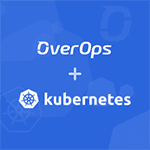Kubernetes
-
DevOps

Rotating secrets in Kubernetes
I’m building a multitenant SaaS on top of Kubernetes at the moment, and one principle we’ve gone with is that…
Read More » -
DevOps

A Beginner-friendly Introduction to Kubernetes for Developers: What is Kubernetes?
Just a few months ago, I had the chance to get my hands dirty with Kubernetes for the very first…
Read More » -
DevOps

Working with kubectl in Kubernetes
Kubectl is a command-line tool that helps us interact with our Kubernetes API server. In turn, it helps us manage…
Read More » -
DevOps

Kubernetes: An Introduction
Introduction: In this tutorial, we’ll introduce you to Kubernetes and will discuss its architecture. As a prerequisite, it’s good to…
Read More » -
Enterprise Java

Spring Boot Microservices , Docker and Kubernetes workshop – part3
In the previous posts we build few micro services (Order Service, Product Service, Customer Service) for an order management system…
Read More » -
Enterprise Java

[Upcoming Webinar] Troubleshooting Kubernetes: The 7 Key Components You Need to Have
In case you haven’t heard, containers are eating the world. This shift is transforming everything we’ve ever known about developing,…
Read More » -
Enterprise Java

Service Mesh and Cloud-Native Microservices with Apache Kafka, Kubernetes and Envoy, Istio, Linkerd
Microservice architectures are not free lunch! Microservices need to be decoupled, flexible, operationally transparent, data aware and elastic. Most material…
Read More » -
DevOps

Exploring Deployment Strategies In Kubernetes
This time I will not write a lenghtly post. Instead, I’ll try to explain different deployment strategies through diagrams. This…
Read More » -
Enterprise Java

Configuring and using AWS EKS in production
Its been some weeks now that our migration to Amazon EKS (work place) is completed and the clusters are in…
Read More »




